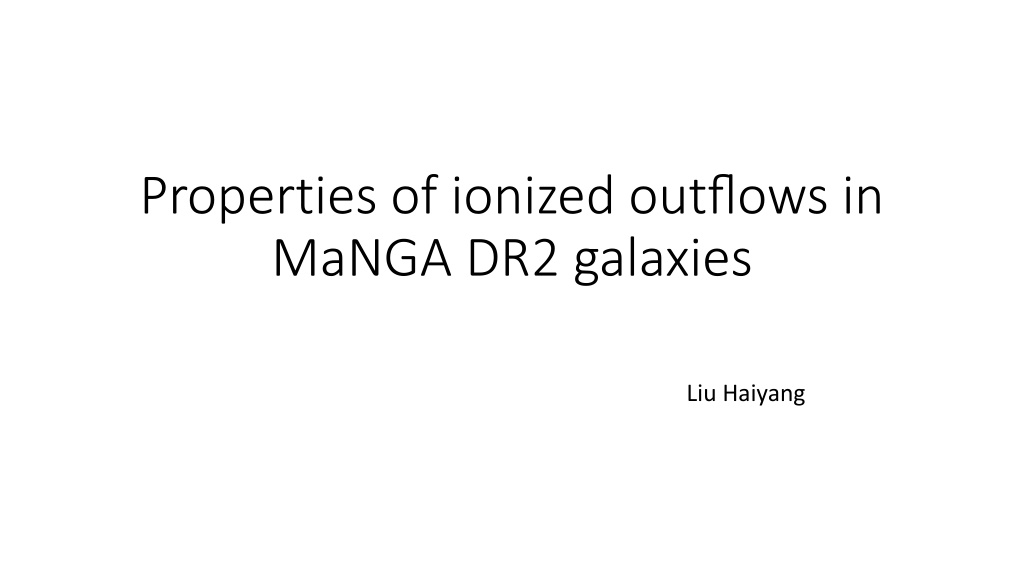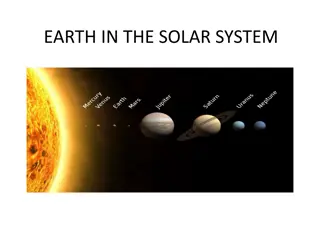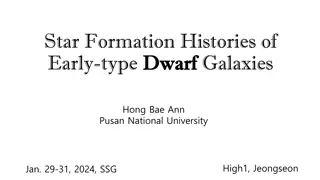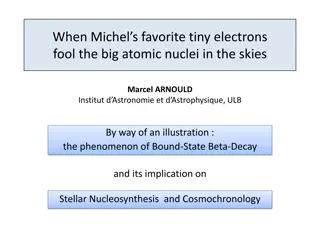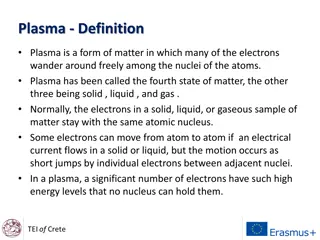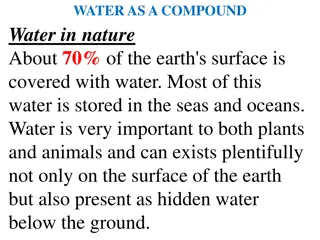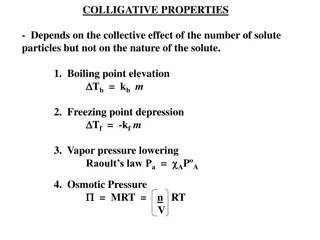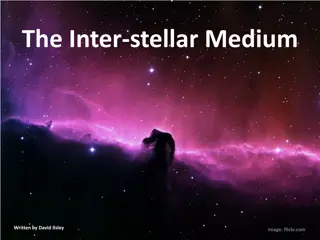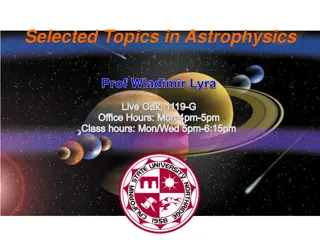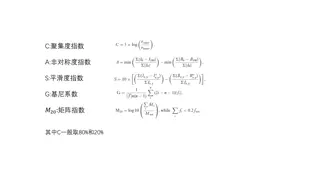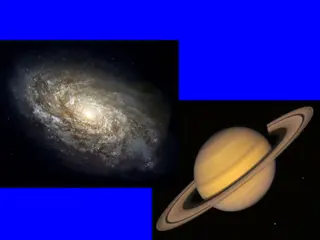Properties of Ionized Outflows in MaNGA DR2 Galaxies
The evolutionary path of galaxies is marked by gas reservoirs that fuel star formation and feed supermassive black holes, influenced by feedback processes such as galactic outflows. This study analyzes ionized outflows in MaNGA DR2 galaxies, focusing on data samples, spectral fitting, and sample selection of outflow candidates to understand the impact on star formation and metallicity regulation. Results show a detection rate linked to H flux and host galaxy stellar mass.
Download Presentation

Please find below an Image/Link to download the presentation.
The content on the website is provided AS IS for your information and personal use only. It may not be sold, licensed, or shared on other websites without obtaining consent from the author. Download presentation by click this link. If you encounter any issues during the download, it is possible that the publisher has removed the file from their server.
E N D
Presentation Transcript
Properties of ionized outflows in MaNGA DR2 galaxies Liu Haiyang
1INTRODUCTION 1. The evolutionary path of galaxies through cosmic time is strongly marked by the availability of gas reservoirs that serve as fuel to perpetuate the formation of new stars and the feeding of their central supermassive black holes. 2. gas reservoirs are sensitive to the influence of feedback from supernovae explosions, stellar winds or active galactic nuclei (AGN) that can have a severe impact in the gas, mixing and/or heating it up, or even expelling it from the galaxy.the star formation activity can be reduced or halted, preventing the formation of new stars and the subsequent stellar mass growth of galaxies. 3. Apart from halting and/or enhancing star formation activity, feedback-induced galactic outflows might also play an important role regulating the amount of metals in galaxies, contributing to maintaining the relation between the gas-phase metallicity and stellar mass of the galaxies. 4. The identification of regions in galaxies affected by feedback processes can be done in different ways, and these outflows have been observed in all gas phases.
2 DATA SAMPLE AND ANALYSIS 1. MaNGA survey(DR2; > 2700 galaxies, z < 0.015) 2. Spaxels(S/N > 3 in the H line) 3. clear H emission map( 1500 galaxies) 4. the H -emitting regions algorithm CLUMPFIND: isolate the H -emitting regions in an automated way,both minor and major axes of the elliptical isophote have to be larger than the FWHM of the MaNGA PSF ~2.5 arcsec. a total of 5200 H -emitting regions, with a mean of 3.5 regions per galaxy.
5. Spectral fitting Software: pPXF (Penalized Pixel-Fitting; Cappellari 2017) SSP models:PEGASE-HR ionized outflows are characterized by the presence of a secondary, broad kinematic component associated to high gas velocities. Two kinematic components: two Gaussian profiles, corresponding to the narrow (systemic) and broad (outflow). Tool: emcee
3 SAMPLE SELECTION OF OUTFLOW CANDIDATES 1. Detection of two clear components in emission: both kinematic components have a probability greater than 99.7% of being detected. the contribution of the weakest component to the total line flux is > 5%. 2. Presence of radial outflowing gas: broad > 1.4 narrow broad > 1.2 1comp 3. two samples: 105 H -emitting regions:the two components to be detected at least in the H line. 45 H -emitting regions:two components have to be detected in all six emission lines.
4 RESULTS AND DISCUSSION 4.1 Outflows detection rate The detection rate of ionized outflows increases with H flux and stellar mass of the host galaxies. only two off-nuclear outflows.
4.2 Identifying the ionizing source in the host regions BPT-N diagram BPT-S diagram From all the sources classified as intermediate in the BPT-N diagram, only one is not classified as star-forming in the BPT-S.
4.3 Outflow properties gas kinematics of outflows originated in regions with different type of ionization. These differences might be due to the presence of of low- and high-velocity shocks, given the high incidence of outflowing, shock-ionized gas detected in our sample.
Considering only pure, SF regions, higher FWHM broad and V max with increasing stellar mass. no significant correlations are found between gas kinematics and star formation properties SFR and SF R , probably due to the lower SFR regime probed in this study.
Ionization by shocks This finding indicates that for roughly half of the sample, despite the outflow originates in star-forming regions, the ionization of the outflowing gas could also be due to shocks likely produced when the hot gas propagates through the ISM.
Gas kinematics and escape velocity well-defined mass-metallicity relation, is thought to be held,at least partially, due to the action of outflows regulating the amount of metals formed and kept inside the galaxy. They can regulate the formation of metals by suppressing the star formation and/or drive metal-rich gas out of the galaxies to the IGM. our results indicate that ejection of gas entrained by ionized outflows to the IGM is more relevant at low dynamical masses, reducing its efficiency towards larger masses.
5 SUMMARY AND CONCLUSIONS 1. The detection rate of ionized outflows increases with H flux and stellar mass of the host galaxies. 2. We find significant differences in the gas kinematics of outflows originated in regions with different type of ionization. These differences might be due to the presence of of low- and high-velocity shocks, given the high incidence of outflowing, shock-ionized gas detected in our sample. 3. Considering only pure, SF regions, we find significant correlations between the kinematics of the outflowing gas and the stellar mass of the host galaxies, implying higher FWHM broad and V maxwith increasing stellar mass, no significant correlations are found between gas kinematics and star formation properties SFR and SFR. 4. only at low masses (M < 10 10 M sun) part of the gas entrained by the outflows is able to escape the gravitational well of the galaxy. At high masses, outflows are probably only able to produce gas fountains that would return the gas to the galaxies.
